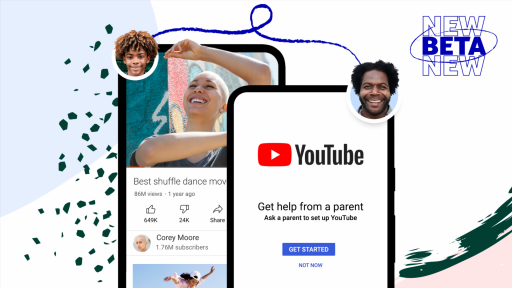YouTube, which has faced fierce criticism for allowing inappropriate content into its dedicated kids area, is adding new controls designed to help parents monitor viewing by tweens and teens.
In a blog post, James Beser, director of product management, kids and family, described the initiative as “a new choice” for parents. It will launch in beta in the next several months.
In 2015, the Google-owned video operation created YouTube Kids, which was designed as a protected arena for users under 13. It now attracts more than 35 million viewers a week in 80 countries. Like social media companies, YouTube has always maintained that it is meant to be for viewers aged 13 and up, so its efforts to safeguard young users, whose access exploded with the rise of sophisticated mobile devices, started a decade after the company’s founding.
Reports in the New York Times and elsewhere in 2019 identified violent and inappropriate content that was algorithmically fed into YouTube Kids. The company announced beefed-up controls in the wake of the controversy, which also unnerved advertisers.
The new “supervised experiences” will be comprised of three tiers of access: “Explore,” “Explore More” and “Most of YouTube.” The Explore level is described by Beser as being for “children ready to move on from YouTube Kids and explore content on YouTube.” It will feature “a broad range of videos generally suitable for viewers ages 9+, including vlogs, tutorials, gaming videos, music clips, news, educational content and more.” The Explore More level offers content “generally suitable” for viewers ages 13 and up, including live streams in the same categories as Explore.
The Most of YouTube tier will contain almost all videos on YouTube, except for age-restricted content, and it including what YouTube deems to be “sensitive topics” that may only be suitable for older teens.
The initiative followed a year of work with parents and experts across the globe in areas related to child safety, child development, and digital literacy, Beser said. The blog post included testimonials from several outside parties.
“We understand the importance of striking a balance between empowering tweens and teens to more safely gain independence, while offering parents ways to set controls,” Beser wrote.
In addition to choosing the content setting, parents will be able to manage watch and search history from within their child’s account settings, he noted. Parents can also use other controls offered by Google’s Family Link, including screen timers. The company plans to continue adding new parental controls over time, such as blocking content.
Read More About:
Source: Read Full Article
